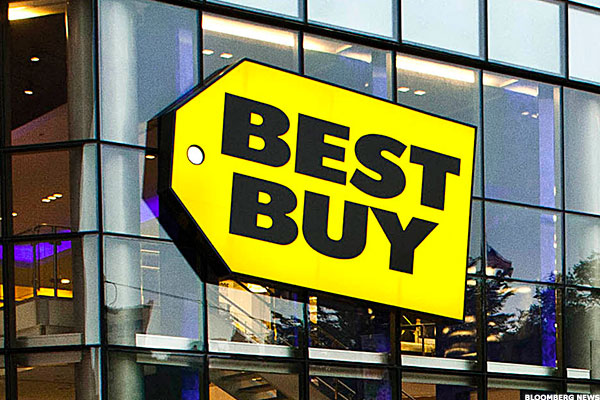A pair of Schwab Advisor Services studies released June 19 focus on the opportunities for RIAs among the members of “Generation Now,” affluent people ages 30 to 45 who already control $3.5 trillion in investable assets.
While Bernie Clark, executive vice president and head of SAS at Charles Schwab Corp. (SCHW), says “the research clearly shows that the RIA model is right for these individuals,” advisors who assume they can attract and service these younger prospective clients with the same tactics employed for baby boomer clients will be disappointed.
In an interview at ThinkAdvisor’s offices on June 17, Clark pointed out that those RIA firms who already are having success with ‘Gen Now’ “tend to have a next-gen advisor” on their staff. Gen Now wants “more connectivity” with their advisors, he said, and “on their terms.”
Clark said that “to appeal to Gen Now, you have to look like them,” and since they have “new centers of influence,” often tied to their social media networks, advisors must figure out “how do you get into those places?”
In addition, RIA firms that “embrace technology” see it not as “a distraction,” but rather a business model that improves their firms’ efficiency while also serving as an entrée into Gen Now’s networks. That’s yet another reason for advisors to “hire more younger people with social media” expertise, Clark argued.
The “Generation Now” study was conducted in March and April of this year with 40 participants ages 30 to 45 with investable assets of at least $500,000 or a household income of at least $150,000. Schwab Advisor Services also released the findings of its 15th semiannual Independent Advisor Outlook Study (IAOS), which surveyed 720 independent advisors (not all of whom custody with Schwab) from mid-April to early May. The findings of that study dovetailed with the opportunities presented by Gen Now, a term Schwab coined to reflect its belief that younger investors are a significant opportunity now, not in some ill-defined future, for advisors.
Generation Now Findings
The Gen Now study found that these younger affluent individuals share many of the same goals-based planning needs as boomers, which is valuable because “fractional points of return haven’t been driving the relationship” between RIAs and their clients, Clark said. However, they also have different characteristics.
For one, they’re more anxious, based on the experiences they’ve had with terrorism, the Great Recession, the dot-com and housing bubbles and pervasive unemployment, especially among younger people. They also tend to distrust financial institutions, reflected in the high levels of cash they hold in their portfolios. They can’t differentiate between different types of advisors, distrust the profession in general and feel that advisors don’t understand them. However, they hope for financial freedom, which they define as not having to worry about the unexpected, and they mostly want to feel sure that their income and investments will cover the costs of health care, education, housing and elder care expenses.
Finally, Clark pointed out that their money goals do not revolve around acquiring ‘things’ and instead “they want experiences and travel.” In the investing realm, Clark suggested that socially responsible investing strategies will be important to the members of this generation.
The IAOS study, the findings of which were also presented at SAS’ Explore conference for advisors in Naples, Fla., on June 19, was tailored specifically to explore advisors’ attitudes about Gen Now. It turns out their attitudes are decidedly mixed over whether that generation represents a business threat or an opportunity.
Of the 720 advisors surveyed — who self-reported that they had $180 billion in aggregate AUM — 37% said they saw risk in the impending wealth transfers from older generations to younger, and said they needed to “develop new client relationships” that will allow them to maintain their current AUM and grow their businesses.
Another 40%, however, saw this big wealth transfer as “an opportunity to develop a model to meet the needs of emerging clients and smaller accounts.” Those findings are particularly telling, Clark said in the interview, since 40% of RIAs’ clients are now retired, with another 30% to retire in the next 10 years, with serious repercussions for the standard RIA business model of charging fees for managing assets, which will decline with so many clients drawing down their portfolios for income in retirement.
So how can RIAs attract that next generation of clients and their assets? Ninety-one percent of respondents said that demonstrating firm expertise and services will be the most important step they can take, followed at 83% by three different, but related, steps. The three are having a strong reputation “based on firm reviews and centers of influence relationships; offering a unique service or value proposition; and clearly communicating the benefits/differences of the RIA model.”
What about referrals, the lifeblood of new business for most advisors? While 32% of respondents said referrals were a formal and routine part of their firm’s culture, 55% said their referral process was informal. In two other findings, 53% said they believe reaching the next generation will require “engagement with entirely new” centers of influence, but only 32% said that social media were “vital to communicating with the next generation of clients.”
Responding to those findings, Clark said in the interview that as part of Schwab’s ongoing Insights to Action Program, it will launch a new program for advisors to help them “create the discipline” needed around referrals. That program, he said, will stress that in every firm “everybody is responsible for referrals, not just the rainmakers,” and that firms should institute “reward systems” that provide incentives for everyone in the firm — “advisors and support staff” — to get referrals.
The study found that such a system is already partly in place at 55% of respondents’ firms who said they “measure staff performance based on the amount of new assets they bring to the firm.”

